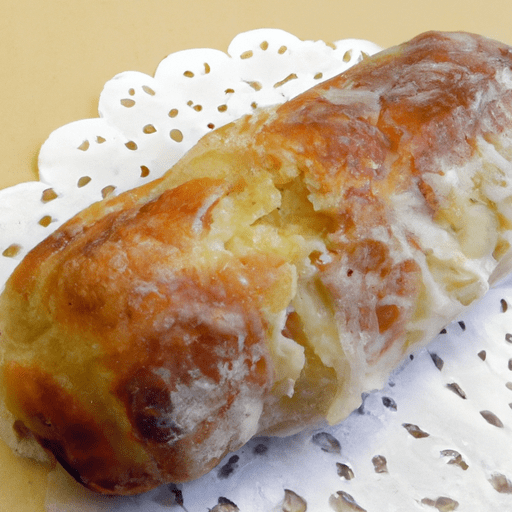The Delightful Fluffiness of Potato Rolls
Potato rolls are a versatile bread option that has gained popularity for good reason. These soft and fluffy rolls add a delectable twist to any meal, whether it’s a hearty sandwich or a simple side dish. In this blog post, we’ll dive into the world of potato rolls, exploring their taste, common uses in cooking, nutritional value, and uncovering some interesting history and facts along the way.
Taste That Keeps You Coming Back for More
One bite of a freshly baked potato roll, and you’ll quickly understand why they have such a devoted following. These rolls have a tender crumb and a slightly sweet, buttery flavor that perfectly complements a wide range of dishes. The potatoes in the dough contribute to the exceptional texture, making them incredibly soft and pillowy.
The Versatility of Potato Rolls
Potato rolls are incredibly versatile and can be utilized in various culinary endeavors. They work wonders as burger buns, providing a soft and sturdy base for that juicy patty and all your favorite toppings. Their delicate taste and fluffy texture also make them perfect for sliders - bite-sized sandwiches bursting with flavor.
These rolls are not restricted to savory applications alone. Their inherent sweetness pairs beautifully with spreads, making them ideal for morning treats. Try toasting a potato roll and spreading it with a layer of sweet butter or your favorite jam for a delightful breakfast or snack.
Nutritional Value That Won’t Weigh You Down
While potato rolls undoubtedly boast a wonderful taste and texture, it’s important to consider their nutritional value. The presence of potatoes in the dough alters the usual composition of bread, offering some distinct benefits.
Potatoes are an excellent source of important nutrients, such as potassium, vitamin C, and dietary fiber. When incorporated into bread, they contribute to a soft, light texture without adding excessive fat. Additionally, the starches in potatoes break down differently during digestion, resulting in a lower glycemic response compared to traditional bread.
Though moderation is always key, enjoying a potato roll can be a slightly healthier choice compared to other bread options, especially for those watching their blood sugar levels.
A Peek into Potato Roll History and Fun Facts
Potato rolls have a fascinating backstory. They gained widespread popularity in the United States during the 1950s, thanks to a nationwide post-World War II enthusiasm for readily available convenience foods. These rolls offered a shortcut to achieving tender and flavorful homemade bread without the hassle of starting from scratch.
Potato roll recipes have been passed down through generations, embracing new interpretations along the way. Today, many bakeries and home cooks alike have their own unique spin on the classic potato roll recipe, incorporating various herbs, spices, and even cheeses.
Fun fact: Did you know that potato rolls were among the first bread products to be commercially sliced? This innovation revolutionized the way bread was packaged and sold, making it more convenient and accessible to consumers.
Conclusion
Potato rolls are a true delight for the senses. From their soft and buttery texture to their versatile nature and nutritional advantages, these rolls have earned their status as an all-time favorite. Whether you use them as a base for your favorite burger or enjoy them as a standalone treat, potato rolls are sure to impress. Explore the endless possibilities of this beloved bread and elevate your meals to new heights of deliciousness.
Potato Rolls
Origin and Cultural Significance: Potato rolls are a type of bread roll that is made with potatoes, flour, yeast, and other ingredients. Their origin is often traced back to Amish and Pennsylvania Dutch cooking, where potatoes were readily available and commonly used in traditional recipes. Today, potato rolls are popular in many parts of the world and are enjoyed for their soft, tender texture and slightly sweet flavor.
Common Uses: Potato rolls are versatile and can be used for various culinary creations. They are commonly used as burger buns, sandwich rolls, or served as a side with meals. Due to their soft and fluffy texture, they are often preferred for sliders or mini sandwiches at social gatherings and parties. Additionally, potato rolls can be used as a base for making dinner rolls, hot dog buns, or even sweet rolls.
Nutritional Benefits: The nutritional benefits of potato rolls can vary depending on the specific recipe used, but generally, they provide a decent source of carbohydrates, fiber, and some B vitamins. Potatoes contain essential nutrients such as potassium, vitamin C, and vitamin B6. However, it’s worth noting that potato rolls often contain added ingredients such as sugar, butter, or eggs, which can increase the caloric and fat content.
Unique Properties: The inclusion of mashed potatoes in the dough contributes to the unique properties of potato rolls. The cooked and mashed potatoes add moisture, softness, and a slightly denser texture to the rolls. This results in a tender and slightly sweeter roll compared to traditional bread rolls. The potato also helps to extend the shelf life of the rolls and keeps them moist for longer periods.
Historical Significance: While potato rolls are not deeply rooted in ancient history, their popularity and significance lie in the cultural heritage of the Amish and Pennsylvania Dutch communities. These rolls were created as a way to utilize potatoes efficiently, especially during colder months when fresh produce might be scarce. Over time, potato rolls have gained wider recognition and become a beloved staple in various cuisines.




Use the share button below if you liked it.
It makes me smile, when I see it.